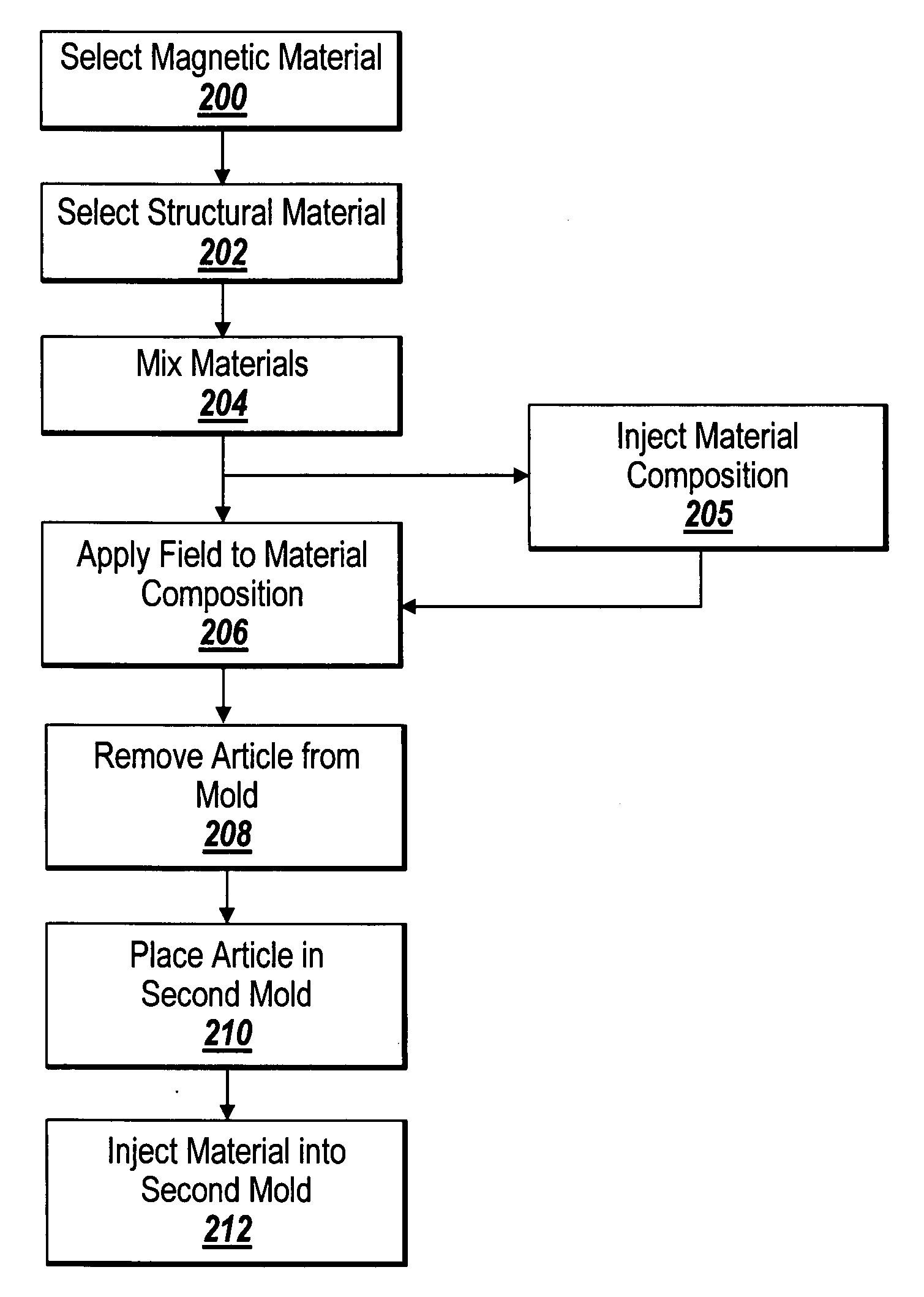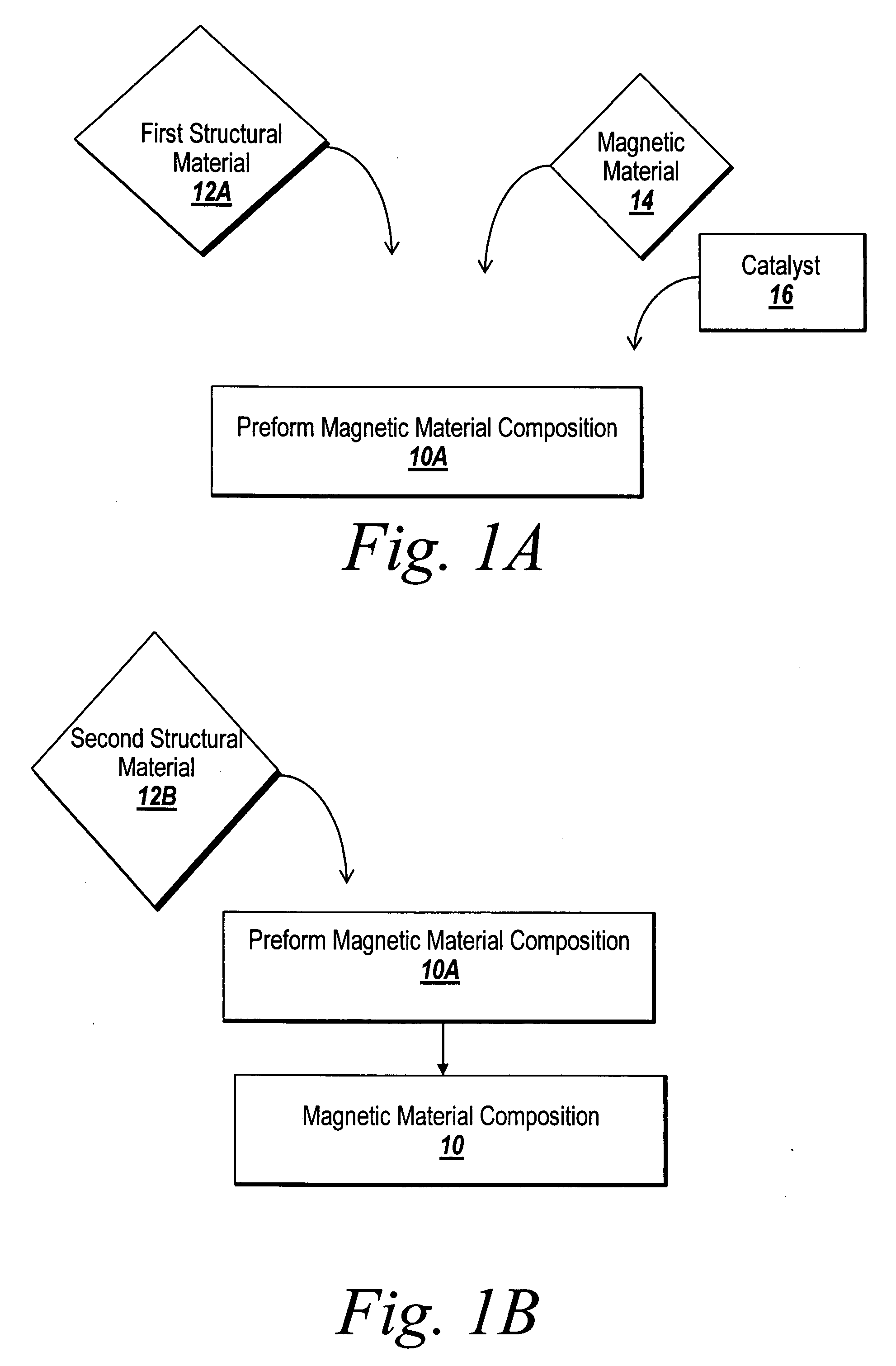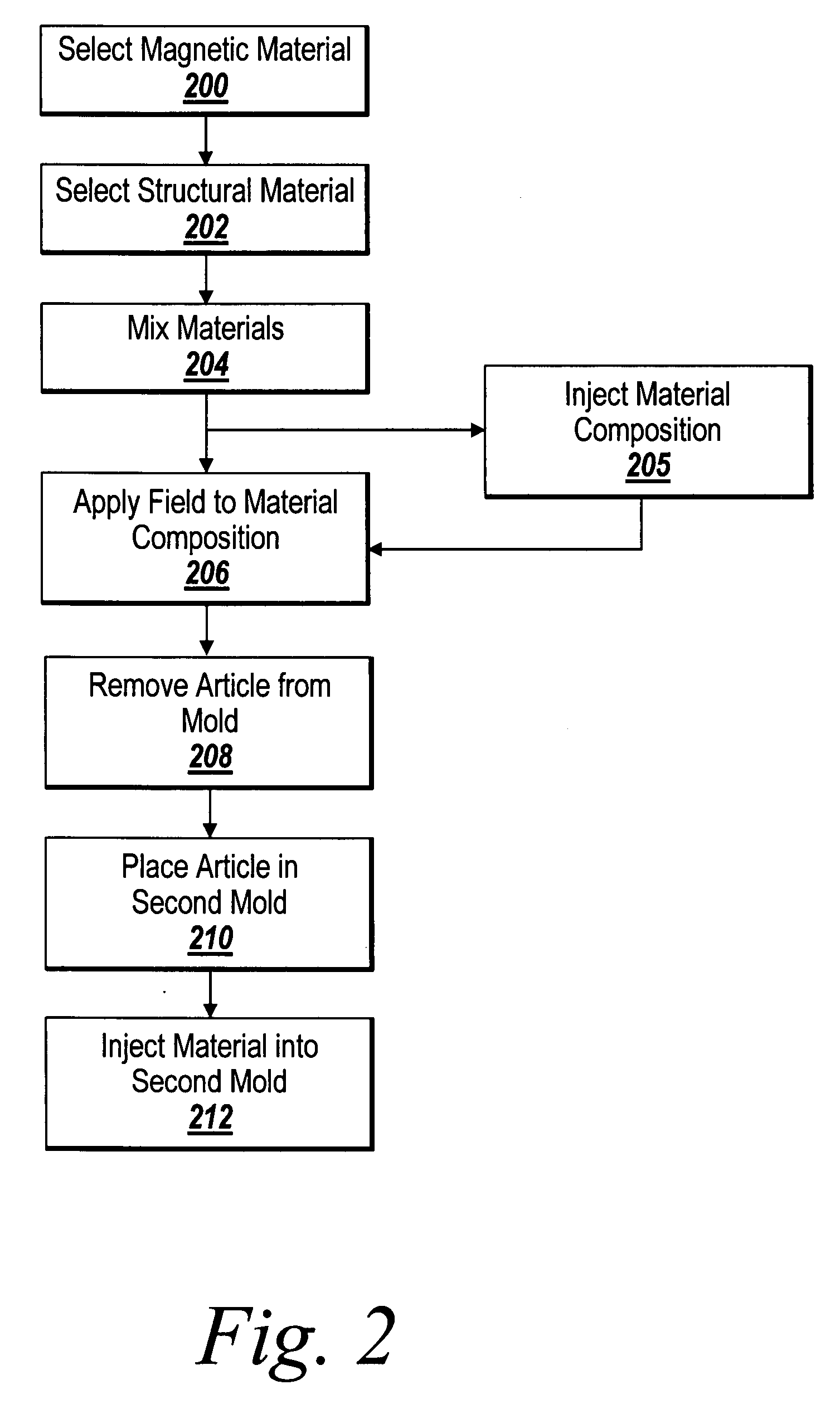Magnetic composites
a technology of magnetic materials and composites, applied in the field of magnetic material composites, can solve the problems of inability to evenly distribute magnetic materials, inability to achieve complex poles, and brittleness of sintering magnets, and achieve the effect of improving the magnetic field strength of the composite, reducing the interstitial spacing of magnetic materials, and sufficient magnetic strength
- Summary
- Abstract
- Description
- Claims
- Application Information
AI Technical Summary
Benefits of technology
Problems solved by technology
Method used
Image
Examples
Embodiment Construction
[0030] The present invention discloses a structural magnetic composite, as well as methods and devices for forming the same. The present invention will be described below relative to certain illustrative embodiments. Those skilled in the art will appreciate that the present invention may be implemented and executed in a number of different applications and embodiments and is not specifically limited to the particular embodiments depicted herein.
[0031] The structural magnetic composite of the illustrative embodiments of the invention may advantageously have one or more portions with a concentration of magnetic material and one or more portions with little or no magnetic particles. The ability to concentrate the magnetic material in the structural magnetic composite allows shaping of a magnetic field and shaping of a magnetic field strength while minimizing an amount of magnetic material, and allowing a structure formed from the structural magnetic composite to withstand forces appli...
PUM
| Property | Measurement | Unit |
|---|---|---|
| size | aaaaa | aaaaa |
| size | aaaaa | aaaaa |
| size | aaaaa | aaaaa |
Abstract
Description
Claims
Application Information
 Login to View More
Login to View More - R&D
- Intellectual Property
- Life Sciences
- Materials
- Tech Scout
- Unparalleled Data Quality
- Higher Quality Content
- 60% Fewer Hallucinations
Browse by: Latest US Patents, China's latest patents, Technical Efficacy Thesaurus, Application Domain, Technology Topic, Popular Technical Reports.
© 2025 PatSnap. All rights reserved.Legal|Privacy policy|Modern Slavery Act Transparency Statement|Sitemap|About US| Contact US: help@patsnap.com



